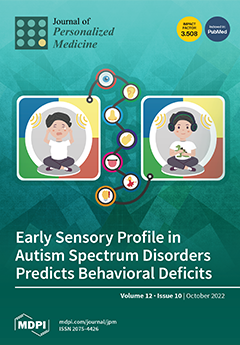Background: A concern about kinematically aligned (KA) total knee arthroplasty (TKA) is that it relies on femoral components designed for mechanical alignment (MA
d-FC) that could affect patellar tracking, in part, because of a trochlear groove orientation that is typically 6° from vertical. KA sets the femoral component coincident to the patient’s pre-arthritic distal and posterior femoral joint lines and restores the Q-angle, which varies widely. Relative to KA and the native knee, aligning the femoral component with MA changes most distal joint lines and Q-angles, and rotates the posterior joint line externally laterally covering the anterior femoral resection. Whether switching from a MA
d- to a KA
d-FC with a wider trochlear groove orientation of 20.5° from vertical results in radiographic measures known to promote patellar tracking is unknown. The primary aim was to determine whether a KA
d-FC sets the trochlear groove lateral to the quadriceps line of force (QLF), better laterally covers the anterior femoral resection, and reduces lateral patella tilt relative to a MA
d-FC. The secondary objective was to determine at six weeks whether the KA
d-FC resulted in a higher complication rate, less knee extension and flexion, and lower clinical outcomes. Methods: Between April 2019 and July 2022, two surgeons performed sequential bilateral unrestricted caliper-verified KA TKA with manual instruments on thirty-six patients with a KA
d- and MA
d-FC in opposite knees. An observer measured the angle between a line best-fit to the deepest valley of the trochlea and a line representing the QLF that indicated the patient’s Q-angle. When the trochlear groove was lateral or medial relative to the QLF, the angle is denoted + or −, and the femoral component included or excluded the patient’s Q-angle, respectively. Software measured the lateral undercoverage of the anterior femoral resection on a Computed Tomography (CT) scan, and the patella tilt angle (PTA) on a skyline radiograph. Complications, knee extension and flexion measurements, Oxford Knee Score, KOOS Jr, and Forgotten Joint Score were recorded pre- and post-operatively (at 6 weeks). A paired Student’s T-test determined the difference between the KA TKAs with a KA
d-FC and MA
d-FC with a significance set at
p < 0.05. Results: The final analysis included thirty-five patients. The 20.5° trochlear groove of the KA
d-FC was lateral to the QLF in 100% (15 ± 3°) of TKAs, which was greater than the 69% (1 ± 3°) lateral to the QLF with the 6° trochlear groove of the MA
d-FC (
p < 0.001). The KA
d-FC’s 2 ± 1.9 mm lateral undercoverage of the anterior femoral resection was less than the 4.4 ± 1.5 mm for the MA
d-FC (
p < 0.001). The PTA, complication rate, knee extension and flexion, and clinical outcome measures did not differ between component designs. Conclusions: The KA TKA with a KA
d-FC resulted in a trochlear groove lateral to the QLF that included the Q-angle in all patients, and negligible lateral undercoverage of the anterior femoral resection. These newly described radiographic parameters could be helpful when investigating femoral components designed for KA with the intent of promoting patellofemoral kinematics.
Full article






